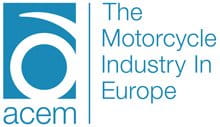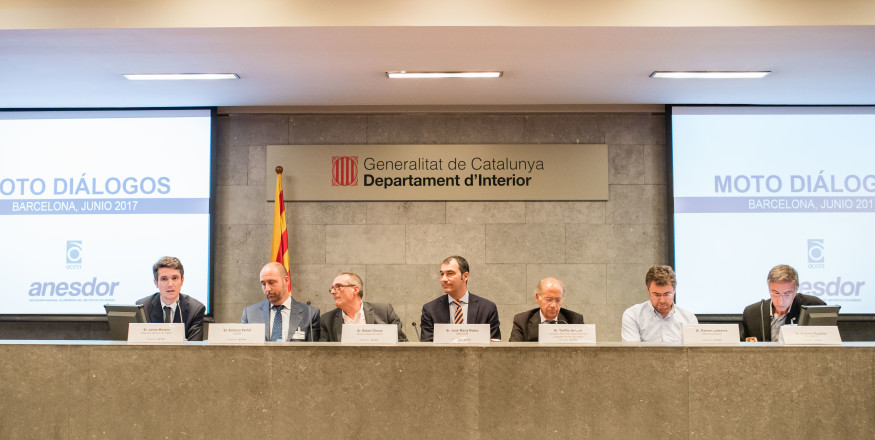The case for specific motorcycle safety strategies
European Union rules on type-approval of L-category vehicles are directly enforced by national administrations and strictly followed by the European motorcycle industry. This results in very high safety standards of all vehicles circulating in the EU.
In spite of this, considerable disparities in terms of road safety remain between EU Member States, as the ETSC (European Transport Safety Council) and the European Commission have pointed out on several occasions. The difference in safety levels for motorcyclists across the EU requires tailored and efficient motorcycle safety national strategies and specific interventions at national, regional and local levels4.
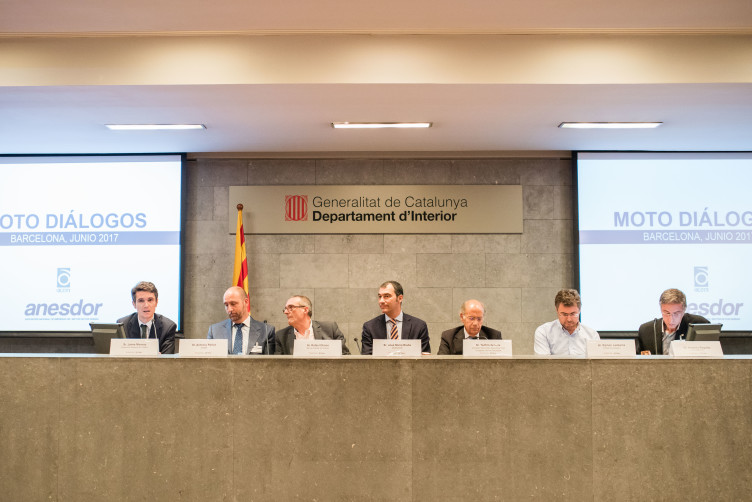
Exchanges between policymakers and industry representatives are instrumental in improving motorcycle safety across Europe. In 2017 ACEM and ANESDOR organised a joint conference on motorcycle safety in Barcelona.
The importance of motorcycle friendly infrastructure
The quality of infrastructure is a vital element of road safety. Carelessly designed or poorly maintained infrastructure can not only damage vehicles but also put road users at risk. In order to make transport infrastructure friendlier to powered two-wheelers, ACEM members have developed, in collaboration with other stakeholders, specific infrastructure guidelines5.
Further examples of best practices in infrastructure management can be found in the FEMA- ERF paper “Improving infrastructure safety for motorcycles”, which highlights the benefits of implementing cost-effective solutions for motorcyclists (adapted guardrails, skid resistance pavement, ensuring adequate maintenance of roads surfaces, etc.)6.
Industry is actively collaborating with European and national authorities through its involvement in the EC Expert Group on Road Infrastructure Safety that will develop a guidance on the design of 'forgiving roads and roadsides', 'self-explaining and self-enforcing roads', and as well on quality standards and requirements of road infrastructure for vulnerable road users.
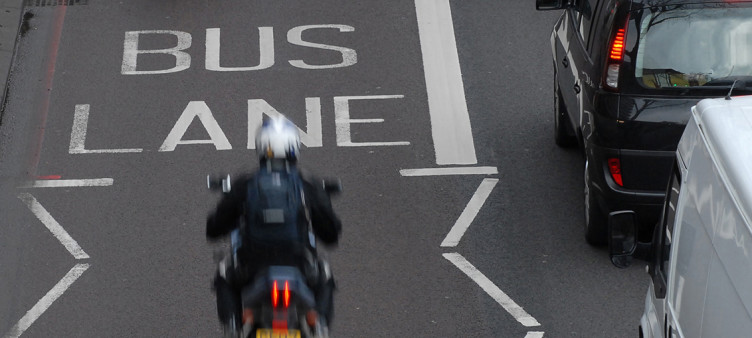
More and more European cities allow motorcycles to use taxi and bus lanes. Copyright: Transport for London
In order to increase riders´ safety in urban areas, the motorcycle industry has advocated for adapting infrastructure (e.g. pedestrian crossings with less paint to prevent skidding, to convert the first car parking space before a pedestrian crossing into motorcycle parking spaces to increase the visibility, advanced stop lines, etc.) as well as allowing the use of bus and taxi lanes.
Currently, motorcycle access to taxi or bus lanes is allowed in several European cities including London, Birmingham, Madrid, Cordoba, Seville, Athens, Thessaloniki, Genoa, Bologna, Venice, Stockholm, among other European cities.
Adapting protective equipment to different needs
Personal protective equipment (PPE) varies depending on the type and use of a vehicle. Riders who use their vehicle in an urban environment require different protective gear to those who drive motorcycles in rural environments, at higher speeds or in off-road activities. As of 2016, the new EU Personal protective equipment regulation introduced a modular approach towards PPE, allowing riders to select garments according to their size, comfort and level of activity.
The motorcycle industry actively encourages riders to wear appropriate safety gear by promoting initiatives such as campaigns offering back protectors with new motorcycle purchases. These efforts are also supported by national industry associations, which work closely with clothing manufacturers, insurance companies and national administrations.
Further to this, the motorcycle industry has continued to carry out research with equipment manufacturers that has led to the development of new protective equipment products, including special clothing designed for hot climates and airbag jackets. Some motorcycle manufacturers have even designed and developed their own protective equipment, addressing riders’ specific needs.
Moreover, the industry has been one of the main contributors to the technical work in PPE done at the European Committee for Standardisation (CEN). Industry efforts were instrumental in developing the EN 17092 standard for motorcycle rider protective clothing. This represents a major step in the development of high quality modular personal protective equipment for riders.
Also, the industry has contributed to the development of a new and better helmet standard. The Regulation ECE R22.06 will result in more resistant and safer helmets.

As of 2016, the new EU Personal protective equipment regulation introduces a modular approach towards PPE, allowing riders to select garments according to their size, comfort and level of activity.
Working together with national authorities to achieve better road safety results
Countries such as Sweden, Spain, Norway and the Netherlands have set up national motorcycle safety strategies that have helped them to achieve high motorcycle safety levels. Conversely, countries that adopt restrictive policies or simply ignoring motorcycling reduce awareness from other road users and put riders at higher risk.
For several years ACEM has organised a round of motorcycle safety events in Barcelona, Madrid, Warsaw, Milan and Paris to raise awareness about the importance of safety policies targeting motorcyclists. These meetings brought together experts from different organisations including public authorities from the ministries of transport and infrastructure, law enforcement authorities, representatives from different user organisations, road safety non-governmental organisations, transport research institutes and insurance companies.
“Several initiatives to improve motorcycle safety have been adopted as a result of dialogue between key stakeholders."
The main objective of these events, which built on the work done in 20157, was to exchange experiences and good practices, and to identify opportunities for safety improvement, rather than prescribing off-the-shelf actions. Some of the key topics covered during the meetings included: motorcycle training, national regional and local motorcycling safety plans, infrastructure design and maintenance and enforcement of traffic regulations.
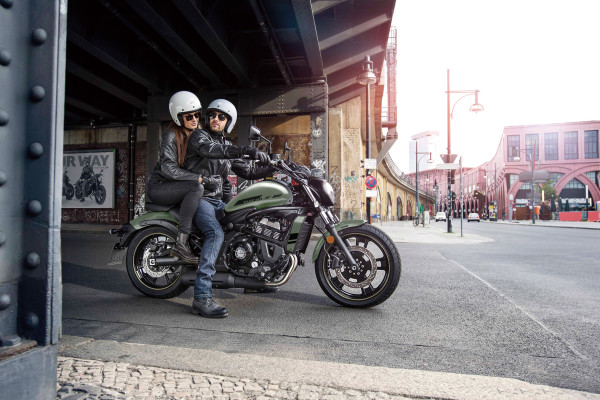
The industry invites national authorities to work together to achieve better road safety results
Examples of initiatives to improve road safety across the European Union
Germany. In 2015, with the support of the German Ministry of Transport, the Industry association IVM has started the “Motorrad: Aber sicher!” (“Motorcycle: but safe!”) project on the Facebook community platform named “VivaLaMopped”, which developed into an online encyclopedia on motorcycle safety for riders and professionals. The project was expanded to the Instagram and TikTok platforms. The short videos adapted to the viewing habits of the target group of young people were viewed over 10 million times on TikTok alone in 2023.
Italy. Thanks to the efforts of ANCMA-Confindustria, the motorcycle industry association, the national road law, Codice della Strada, has been modified to recognise motorcyclists as Vulnerable Road Users alongside with pedestrians and cyclists, ANCMA also monitors how the local administration prioritises PTW safety actions within the urban mobility plans by a yearly survey designated of all the major Italian cities.
Netherlands. Relevant stakeholders (the Ministry of Transport, Police, the SWOV research institute, users’ organisations, RAI - the industry’s national association, the dealer organisation BOVAG, the Dutch Vehicle Authority RDW and road authorities) joined forces in “Motorplatform”. In 2018, they published the Dutch Motorcycle Safety Action Plan that includes recommendations on safety campaigns, training, infrastructure and ITS. The latest updated safety action plan was published in 2023.
Spain. ANESDOR, the Spanish motorcycle industry association, and the Catalonian Traffic Service launched the first edition of 3.0 Training in 2015. Since then, 9 editions aiming at improving motorcyclists’ riding skills. have been implemented in different parts of Catalonia with the participation of more than 5,000 riders. In 2023, a new 'Urban Training 3.0' format was introduced. specially designed for training staff using motorcycles to carry out their work duties and urban commuters in general. Other regions have already shown interest in implementing this programme.
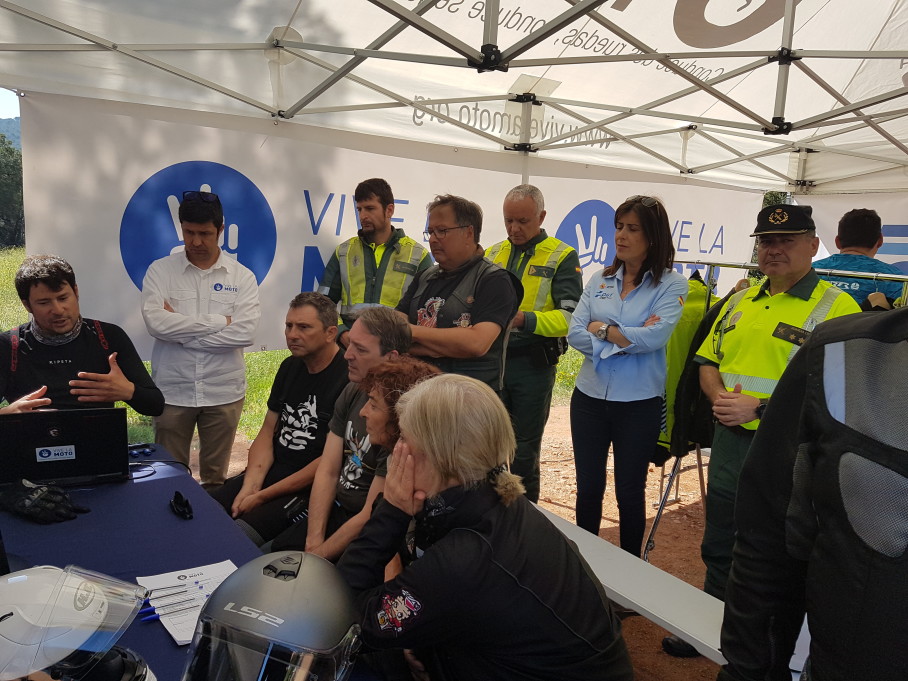
ANESDOR and traffic authorities work together to improve motorcyclists´ riding skills through the Training 3.0 project.
A continuous commitment to improving road safety across Europe
The industry will continue working with stakeholders at national level to improve motorcyclists’ safety across Europe. Moreover, the sector will continue to support all the initiatives that promote riders’ safety in the different European countries.
Exchanges between policymakers and industry representatives are instrumental in improving motorcycle safety across Europe and beyond.
International Transport Forum virtual workshop “Riding in a safe system”, June 2021
As a follow up of the Third Global Ministerial Conference on Road Safety, the International Transport Forum, the Swedish Transport Administration, the Swedish National Road and Transport Research Institute, the International Motorcycling Federation, IMMA and ACEM and its members organised a virtual workshop on PTW Safety7. The workshop was held over several days and involved more than 150 experts from all regions in the world. Eight priority actions for policy makers were prepared to effectively include and improve safety of PTW riders in their regional, national, or local road safety policy activities.
International Motorcycle Road Safety, Conference, Zaragoza, Spain, 2024
The conference was hosted by ACEM member ANESDOR and the Dirección General de Tráfico (DGT) involving ACEM and its members. More than 400 experts from public institutions, industry, research centres, users and infrastructure operators from different continents shared different perspectives on motorcycle safety8. The conference also included an interactive exhibition, demonstrating vehicles, personal protective equipment and safety and mobility technologies. FIM awarded the event as the “2024 Best Road Safety and Public Affairs Action”. The second edition of the Conference will be held in 2026.
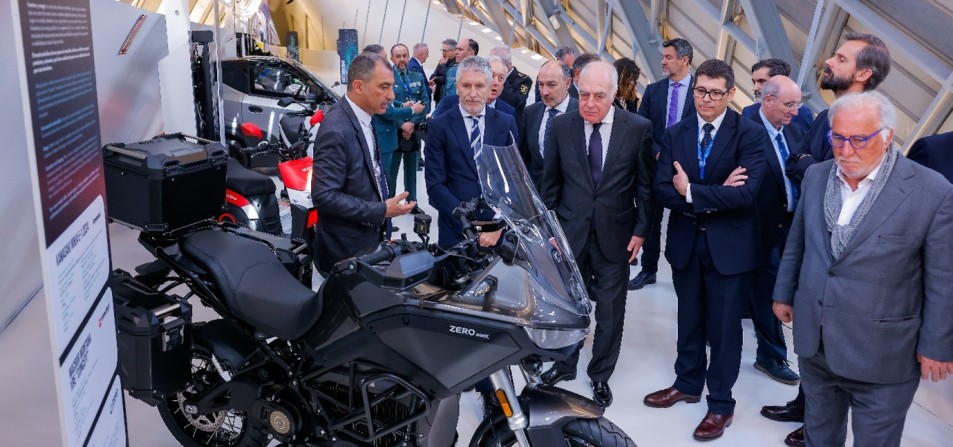
Innovative vehicles and other safety related technologies and equipment were on display at the event organised by ANESDOR and DGT.
International Motorcycle Safety Conference, Cologne, Germany
ACEM has a longstanding partnership with the Institute for Motorcycle Safety (Institut für Zweiradsicherheit e.V., ifz). ACEM supports the organisation and contributes to the biannual conference9, considered the world's leading platform for the exchange of motorcycle safety research. The 15th edition of the International Motorcycle Safety Conference, bringing together global safety experts and researchers, was held in 2024. As partners of the conference, ACEM led a special session titled “Riding Together to the Future”, where speakers presented the Motorcycling Manifesto, the industry’s Vision 2030+, and the latest innovations in connected riding and future assistance systems.
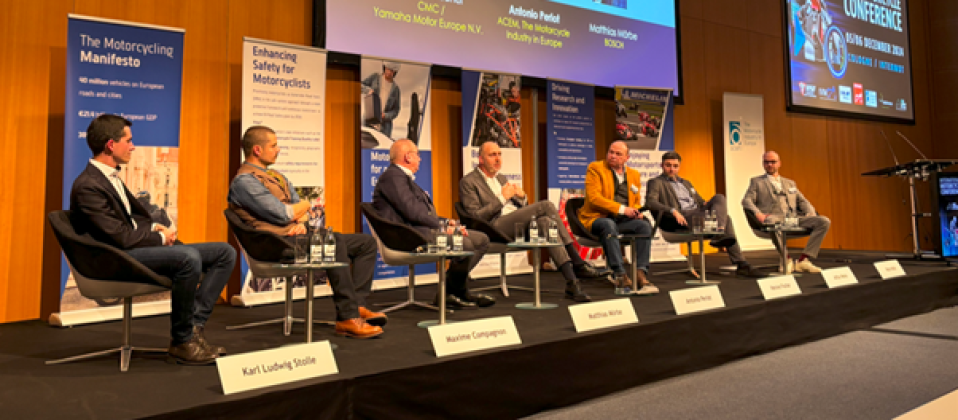
The “Riding Together to the Future” session focused on the industry’s commitment to road safety by advancing vehicle safety technologies, promoting sustainable transport policies, investing in safer road infrastructure, and encouraging responsible road user behaviour.
4 See for example: European Commission. Road safety in the European Union. Trends, statistics and main challenges. Brussels, 2018. https://transport.ec.europa.eu/news-events/news/2023-figures-show-stalling-progress-reducing-road-fatalities-too-many-countries-2024-03-08_en
5 The ACEM “Infrastructure Guidelines Handbook” was prepared by industry experts, road and traffic engineers, and urban planners.
7. https://www.itf-oecd.org/motorcyclists-safety-workshop-riding-safe-system-closing-plenary
8. https://motorcycleroadsafety.com/
9.IMC 2024 – Special Session „Riding together to the Future“ – Institut für Zweiradsicherheit
